Tracking grievances with Palmoil.io

Grievances possibly provide the most valuable window into whether a palm oil company is actively addressing unsustainable and socially irresponsible practices in their supply chain. To make tracking and reviewing grievances simpler and more effective, Palmoil.io has built a comprehensive grievance database, which now features over 1,500 grievances updated every month. In this post, we explain why we did this, how we did it, and what you can do with this information.
Grievances monitoring is messy, time consuming, and tedious
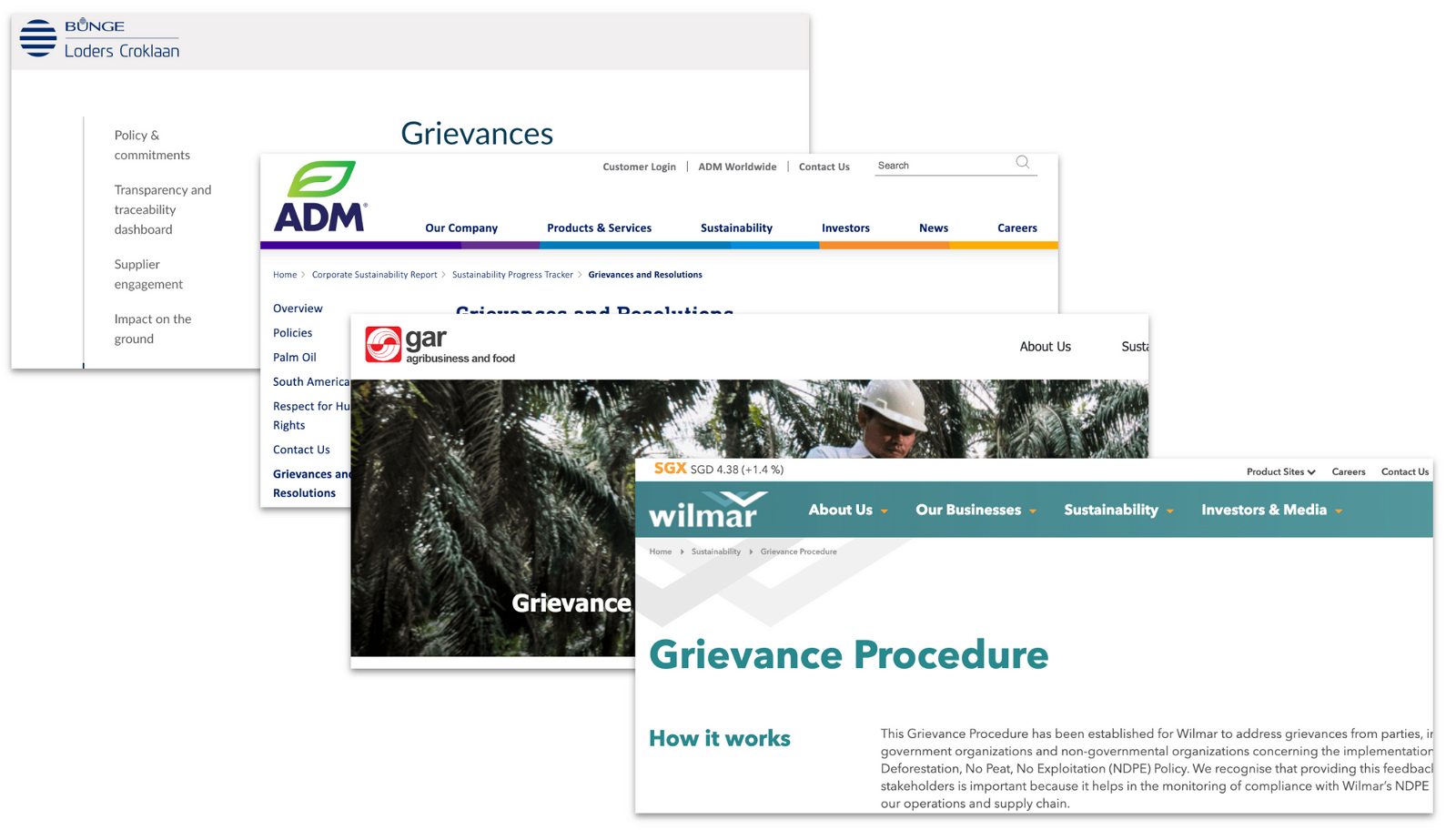
Major producers and traders such as Wilmar, Golden Agri Resources, and Bunge buy from the same downstream suppliers, exposing them to an overlapping set of risks. Each company maintains their own separate grievance tracker, which makes reviewing grievances both time consuming and tedious. They also use different methodologies and procedures for handling grievances, which often leads to different actions being taken.
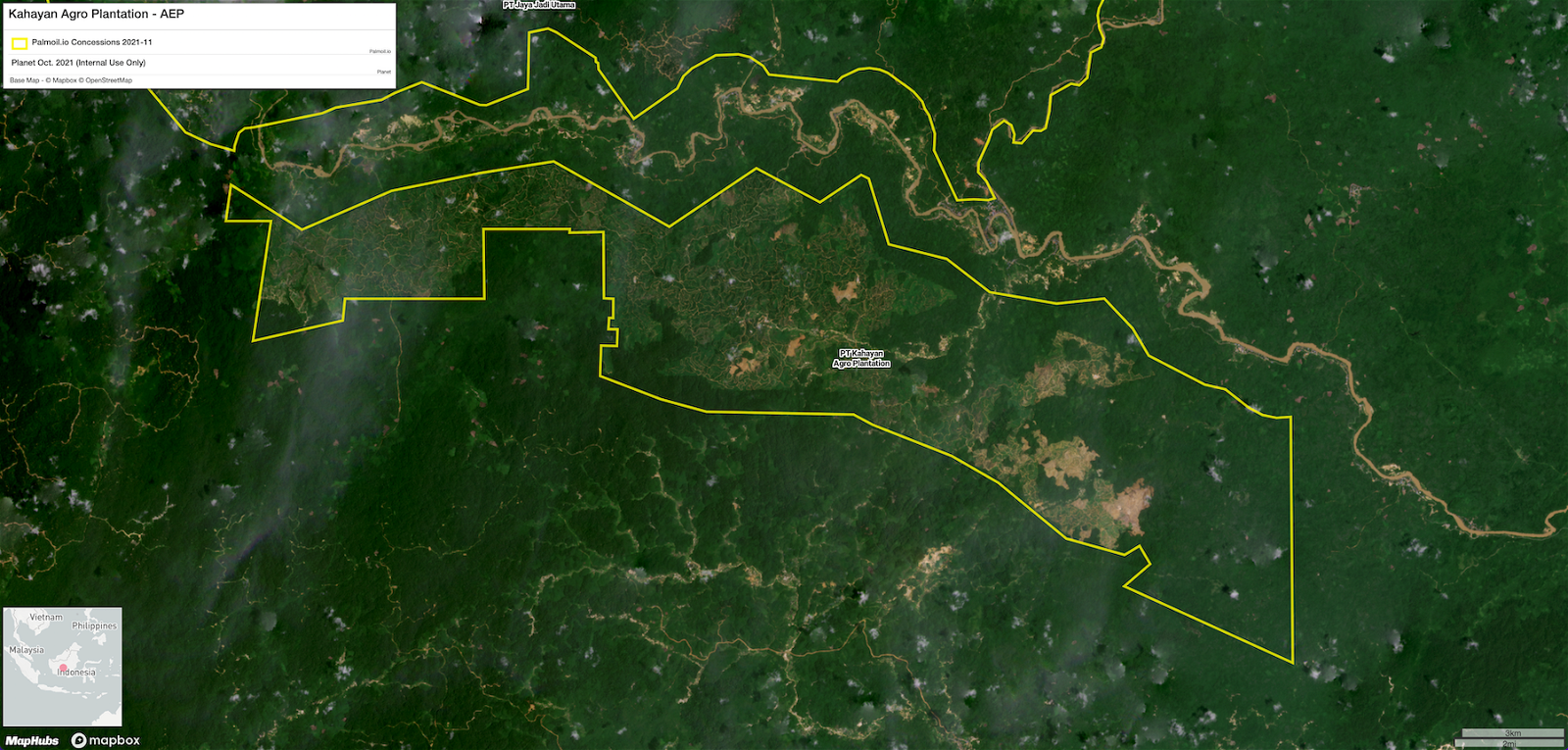
For example, grievances related to alleged clearing of HCV in Kahayan Agro Plantation - a concession in Central Kalimantan - have been filed on 15 different trackers. Outcomes varying from some traders suspending the group to others disputing the allegations. This situation leaves downstream buyers, investors as well as the general public with a patchwork of information filled with data gaps and inconsistencies.
Building one grievance database
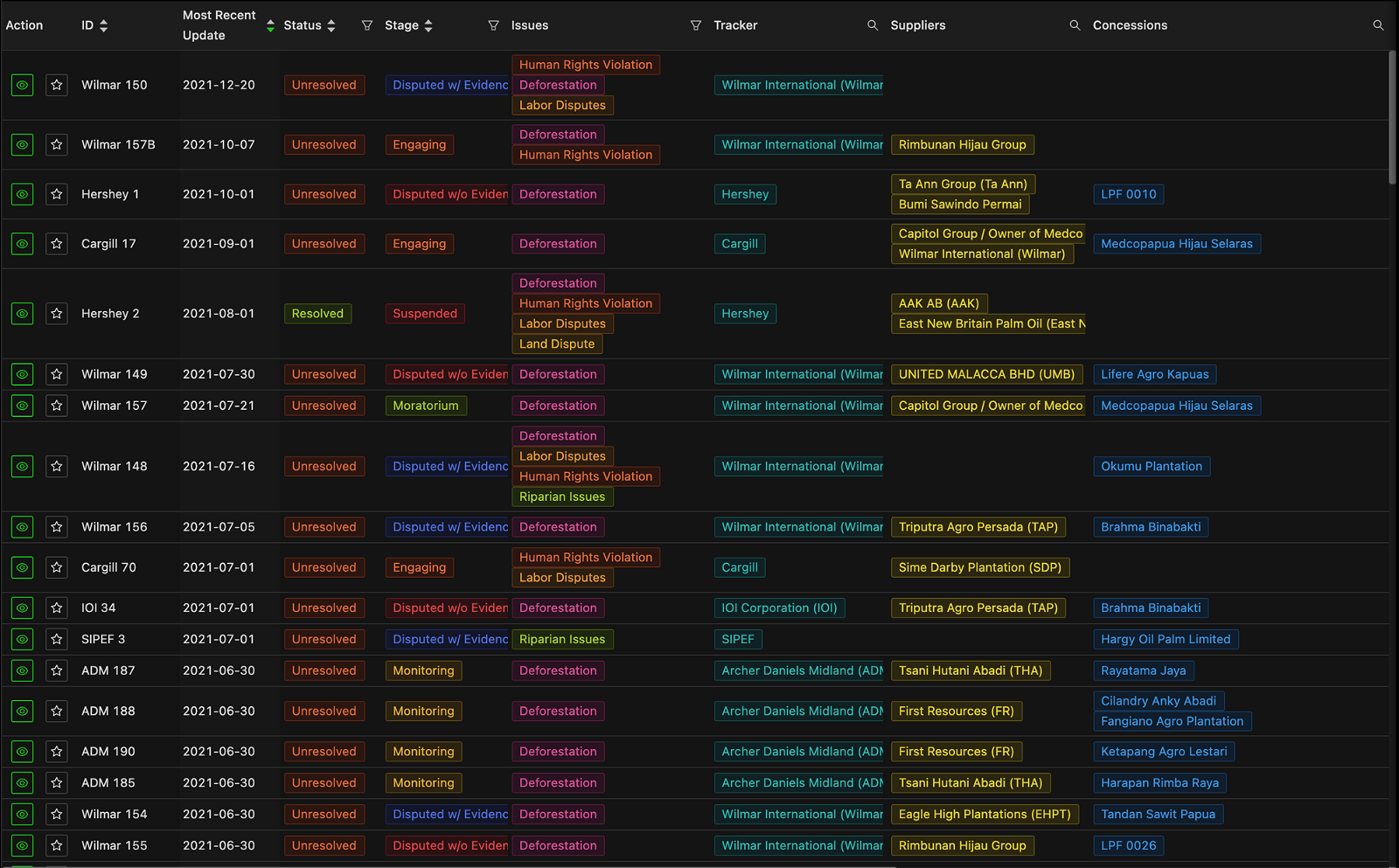
Palmoil.io’s single grievance database aims to add coherence and consistency to grievance filing. This allows us to track how multiple companies respond to the same grievance as well as track a grievance that only one company files but identifies other companies.
How we do it: Identify grievance source, categorize, and link
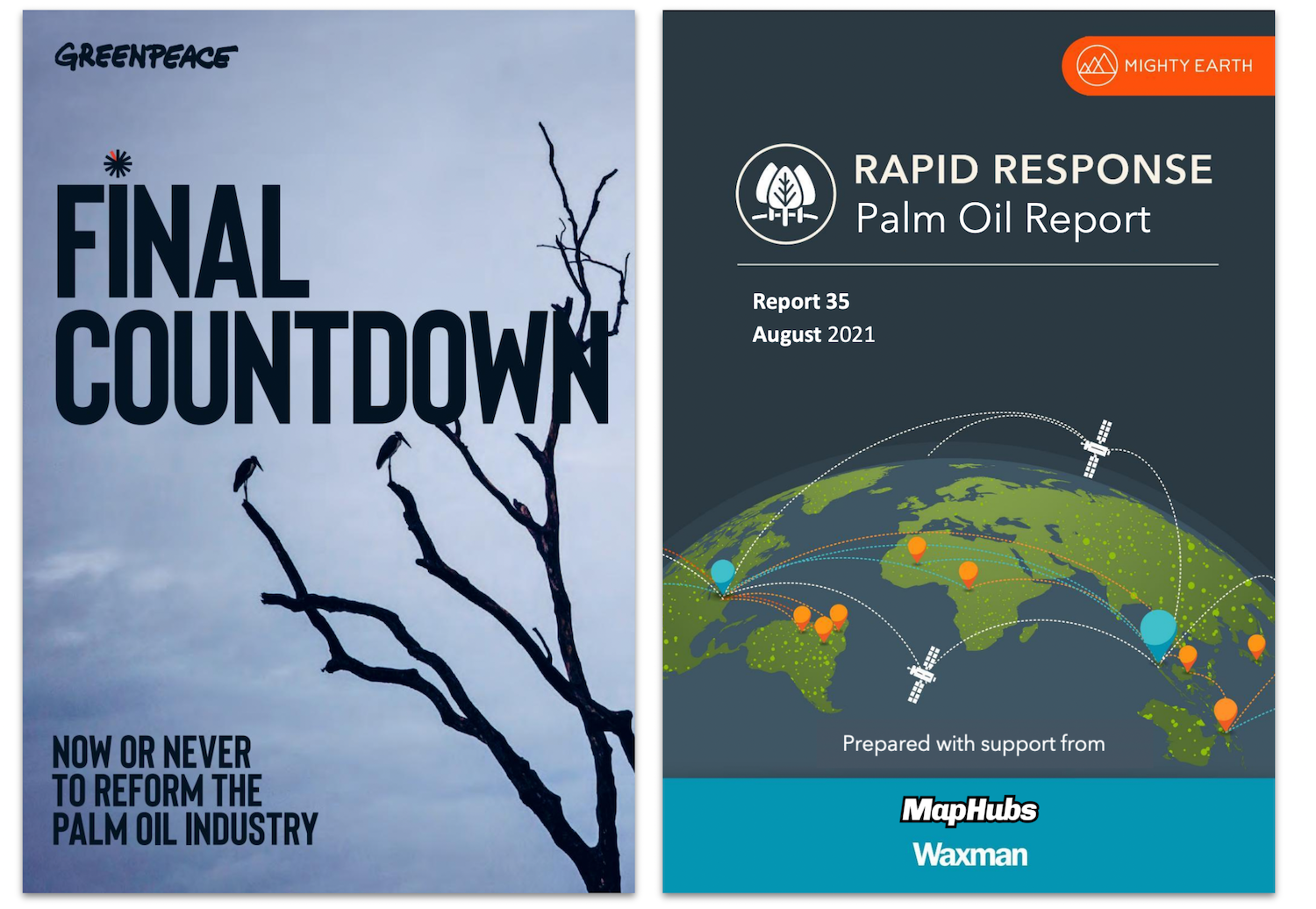
First, we identify the source of the grievance and then link it to the palm oil group or groups identified. We then link any physical entities such as mills and concessions to a map. The grievance is then categorized by issue such as deforestation, fires, human right violation, or labor dispute and any description is also captured.
Track grievance updates
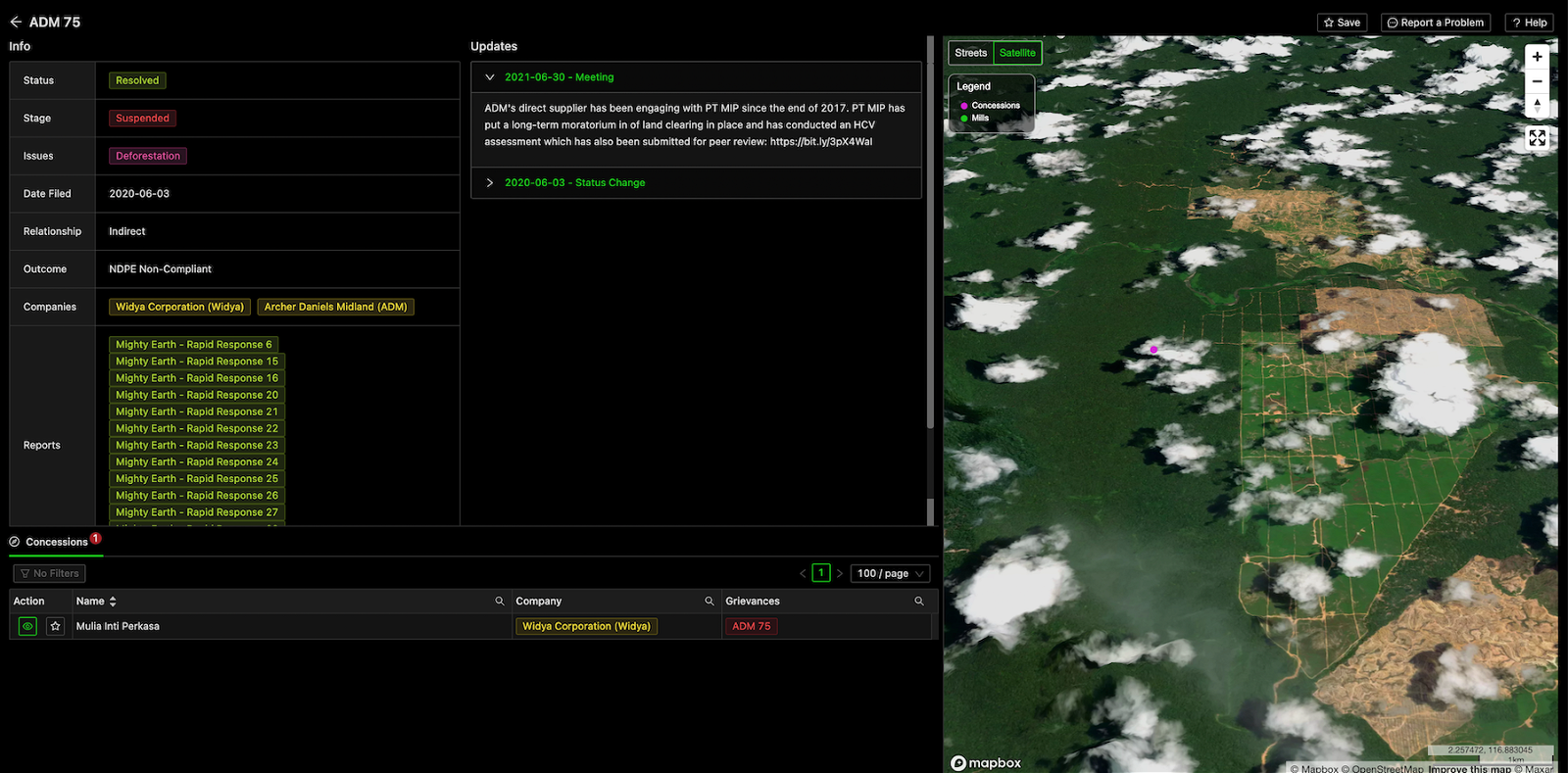
Perhaps the most important information is updates. Most trackers provide regular updates on steps they or their direct supplier have taken to address the grievance. This may include details of a meeting, a field investigation, or the publication of a report. The best trackers provide extensive documentation with links and maps available for review. All of this is captured in the database and updated monthly.
Track grievance status
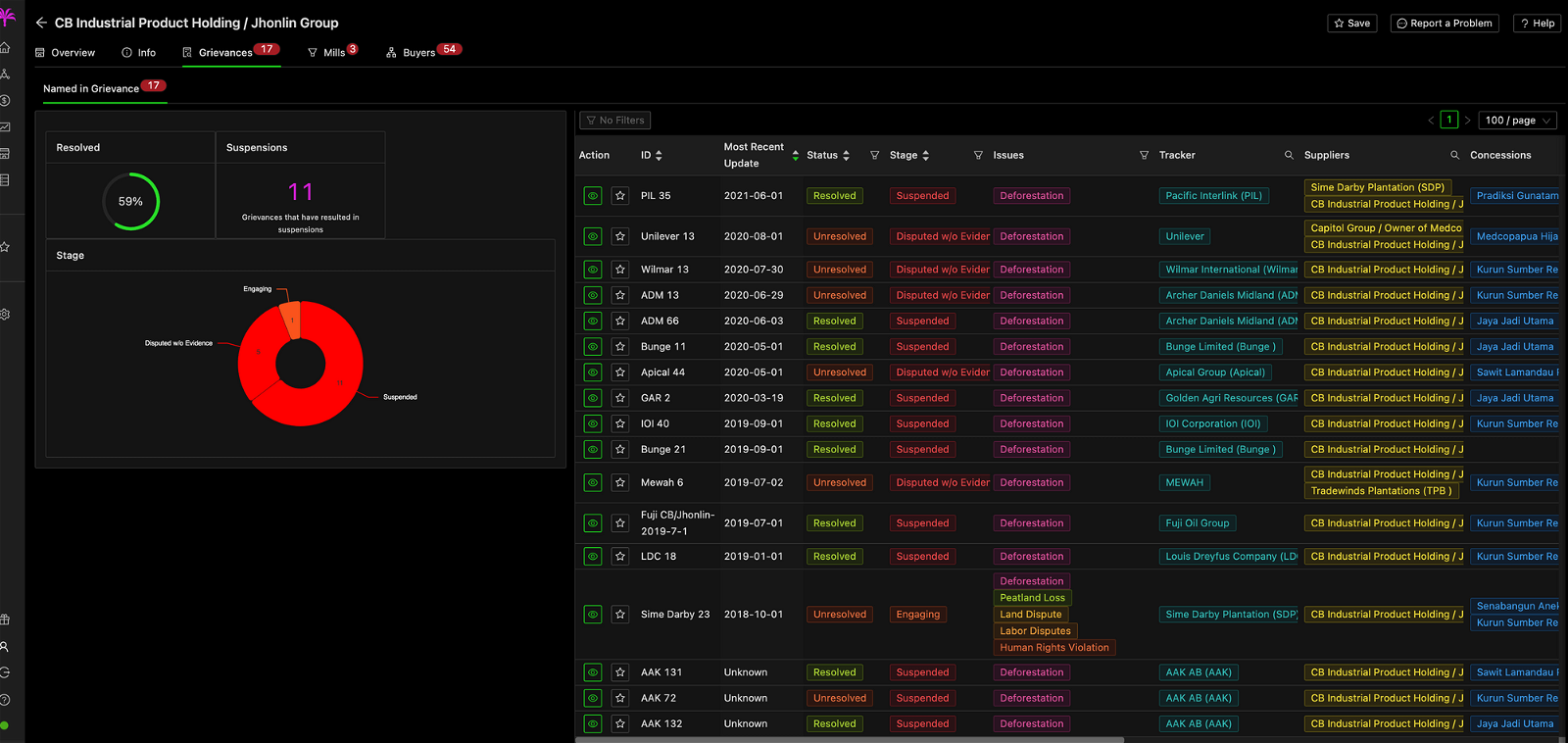
Finally, we categorize grievance status. This can be complicated. Because companies differ on how they treat grievances, we follow a key principle that a grievance can only be closed once a satisfactory outcome has been reached with the grievance submitter. Palmoil.io tracks the status based on a concrete outcome such as a suspension of a supplier found in violation or stated agreement between the company and grievance submitter. If the grievance is disputed, we categorize this on whether the tracker provides evidence such as a concession boundary map. The reason for the dispute is also captured.
Rating Grievance trackers

Any company with a grievance tracker should be applauded. It is difficult to subject your practices to public scrutiny, particularly when your competitors may not be taking the same financial and reputational burden. Almost all major traders operate a grievance tracker as well as growing number of upstream suppliers and major downstream buyers. For this reason, we award higher ratings to companies who maintain a tracker.
Measuring the quality of a Tracker

The key quality measure that we track is the rate of resolution. Resolution rate identifies how actively a company is engaging its suppliers to resolve a case as well as providing regular updates and evidence to satisfy the submitter. For example, if companies that maintain an ineligible grievance lists tend to have low rates of resolution. Even if a grievance is deemed ineligible, evidence still needs to be provided and the grievance submitter needs to be engaged.
Palmoil.io tracks grievances for you
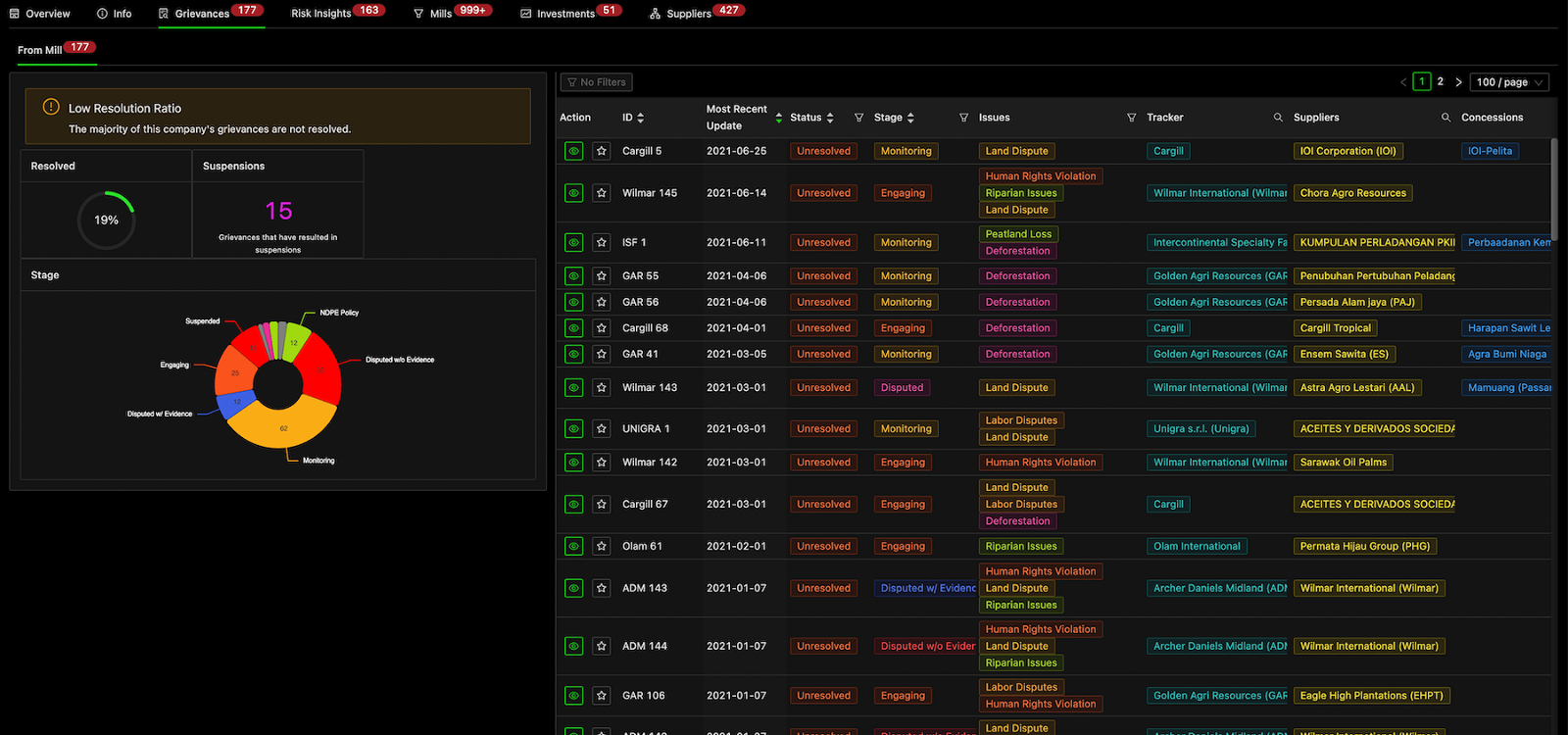
Downstream buyers are often several steps removed from the direct supplier who purchased the grievance-causing palm oil. Rather than painstakingly tracking all the grievances and publishing a new tracker, Palmoil.io does automatically does this for you. If you publish a mill list, Palmoil.io scans your list and files all grievances related to the mills and palm oil groups, related to your supply chain. This makes identifying and monitoring cases much faster.
Start tracking grievances today

Palmoil.io has the most comprehensive and dynamic publicly available grievance database, now tracking grievances for over a hundred companies with grievance dashboards. Access costs starts at only $49 per month. In the first quarter of 2022, we will be adding even more features to our grievance system, so stay tuned for further updates. Sign up today at palmoil.io/pricing.

